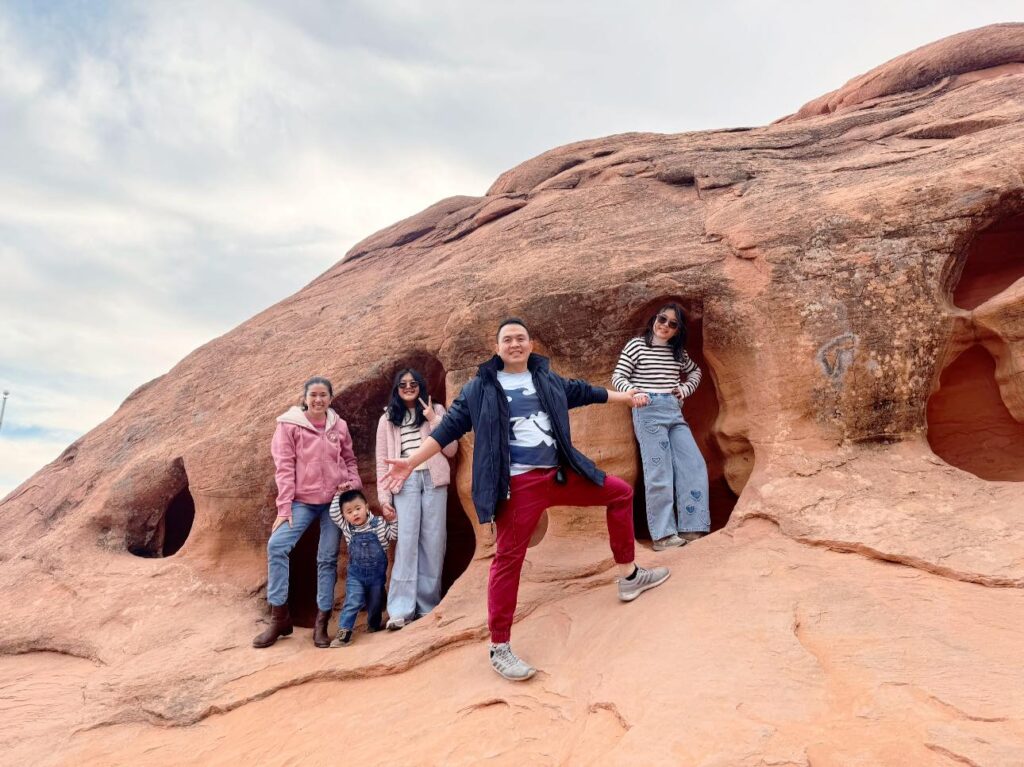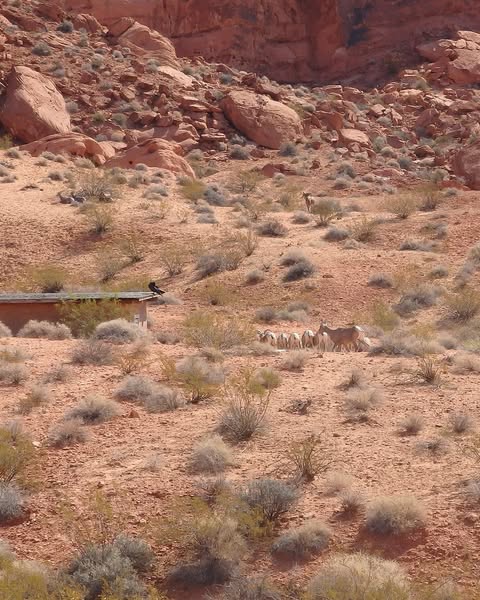Have you ever looked at a photo and thought, “That can’t be real, it looks like something from another world”? If so, Valley of Fire State Park will make you feel like you’ve stepped into an alien landscape straight out of a sci-fi movie. Located in southern Nevada, this park is a hidden gem known for its mind-blowing geological formations, vibrant red rocks, and mystical desert beauty. The valley’s otherworldly scenery has been drawing photographers, adventurers, and nature lovers for years. So, let’s dive into why these photos look so unbelievable and how you can capture them yourself!
What Makes Valley of Fire So Unique?
If you’ve ever seen a photo of Valley of Fire, you know it’s not like your typical desert landscape. The park is a canvas painted in brilliant reds, oranges, and yellows, thanks to its rich sandstone formations. But what truly makes this place unique are the colors and textures. The park’s geology dates back over 150 million years, which means it’s a treasure trove of fossils and rock layers, creating a surreal palette of colors. Picture the fiery reds of the sandstone cliffs clashing with the deep blue desert sky – it’s a sight that feels almost unreal, like something from another planet.
When you look closer, you’ll spot swirling rock formations, intricate ridges, and even ancient petroglyphs carved into the stone, adding to the park’s mystical charm. For photographers, this place is nothing short of a dream because the landscape almost begs to be captured in a photo.
The Best Time to Visit Valley of Fire for Photos
Now that you know what makes Valley of Fire stand out, let’s talk about when to visit for the most mind-blowing shots. The timing of your visit can make or break your photos. The best time to visit is during the spring and fall when temperatures are mild, and the desert blooms with life. This is the perfect season to witness the stunning contrast of green desert plants against the red rocks. But don’t forget the golden hour – the first and last hours of sunlight during the day – when the low light casts an ethereal glow on the landscape.
If you’re aiming for some really dramatic shots, consider visiting just before sunrise or around sunset. The sun’s soft light will bring out the vibrant colors of the rocks and the shadows will highlight the intricate details of the terrain. It’s a photographer’s paradise!
Capturing the Vibrant Red Rock Formations
The highlight of Valley of Fire is undoubtedly its striking red rock formations. These rocks are the main reason people visit the park, and they’re a photographer’s best friend. The rich red hues are created by iron oxide in the sandstone, and when the sun hits them just right, they seem to glow with an almost magical intensity.
To capture these vibrant rocks in all their glory, you’ll want to play around with different angles. The key is to get up close and personal with the rocks to show off their textures and layers. If you’re using a DSLR or mirrorless camera, try using a polarizer filter to enhance the color saturation. This filter helps reduce glare from the sky, making the reds of the rocks pop even more. And don’t forget to look for the unique shapes that the rocks form – from elephant-like figures to twisting spirals – each one tells a different story.
Mysterious Desert Flora and Fauna
While the red rocks are the main attraction, the flora and fauna of Valley of Fire add a sense of mystery to the landscape. Despite being in the desert, the park is home to a surprising variety of plant and animal life. You’ll find resilient plants like Joshua trees, cacti, and sagebrush dotting the landscape, their colors contrasting beautifully with the fiery rocks.
When it comes to wildlife, keep an eye out for creatures like desert tortoises, lizards, and the occasional bighorn sheep. These animals add an element of life to the otherwise stark environment. If you’re a photographer looking to capture these elusive animals, remember that patience is key. Use a telephoto lens and try to blend into your surroundings to snap the perfect shot of these creatures in their natural habitat. Their presence adds a layer of depth to your photos, making them feel even more otherworldly.
The Iconic Arch Rock: A Photographer’s Dream
If you’re visiting Valley of Fire, Arch Rock is an absolute must-see. This natural arch, carved by wind and water over millions of years, is one of the park’s most iconic features. It’s the perfect spot for both amateur and professional photographers alike.
To make the most of your Arch Rock photos, try capturing it with the setting sun in the background. This will create a glowing halo effect around the arch, giving your photo a magical feel. For a different perspective, consider shooting from beneath the arch or framing it with the surrounding desert landscape. These simple techniques can transform an already stunning scene into a showstopper photo.
The Hidden Gems of Valley of Fire
While Arch Rock and the other popular formations are fantastic, some of the best photos come from the park’s hidden gems. Off the beaten path, you’ll find lesser-known spots like the White Domes, which feature smooth, white sandstone contrasting with the red rocks. The Elephant Rock, shaped like its namesake, offers a whimsical yet breathtaking view. These less-visited areas offer photographers a chance to capture a more unique and serene side of the park, away from the crowds.
A tip for discovering hidden gems is to talk to locals or park rangers, who can point you toward quieter spots that are just as jaw-droppingly beautiful as the famous ones. These quiet areas often offer a sense of solitude, making your photos feel even more personal and intimate.

Conclusion and Final Thoughts
Valley of Fire State Park is truly a photographer’s paradise. The stunning red rocks, fascinating geological features, and vibrant desert flora create a landscape that looks like it belongs on another planet. Whether you’re an experienced photographer or just someone looking to snap some incredible vacation photos, this park has something for everyone. So grab your camera, head out to Valley of Fire, and let the beauty of the park speak for itself. The otherworldly views are waiting for you!
FAQs
1. When is the best time to visit Valley of Fire for photography?
The best times are during the golden hour—early morning after sunrise or late afternoon before sunset. These times offer the best lighting for vibrant and dramatic photos.
2. Can I photograph wildlife in Valley of Fire?
Yes, Valley of Fire is home to a variety of wildlife, including birds and lizards, which can make for unique and interesting photography subjects.
3. What equipment should I bring for Valley of Fire photography?
A DSLR or mirrorless camera with a wide-angle lens is ideal for capturing the vast landscapes. A telephoto lens is also useful for wildlife and distant shots.
4. Do I need a permit to take photos in Valley of Fire?
No, a permit is not required for general photography. However, if you plan to conduct commercial photography, you may need to apply for a permit.
5. What is the best season to visit Valley of Fire?
The spring and fall seasons are the best times to visit for photography, as the temperatures are more moderate and the lighting is ideal.

